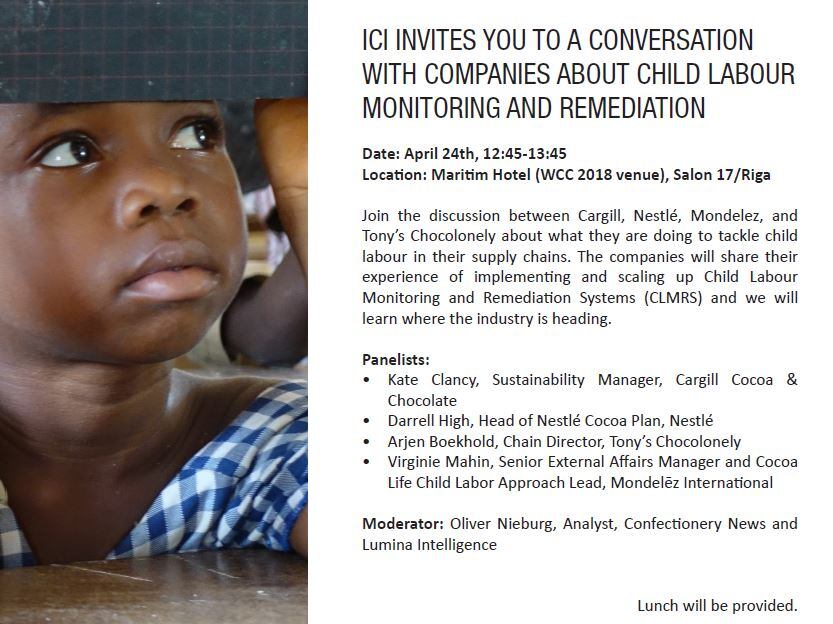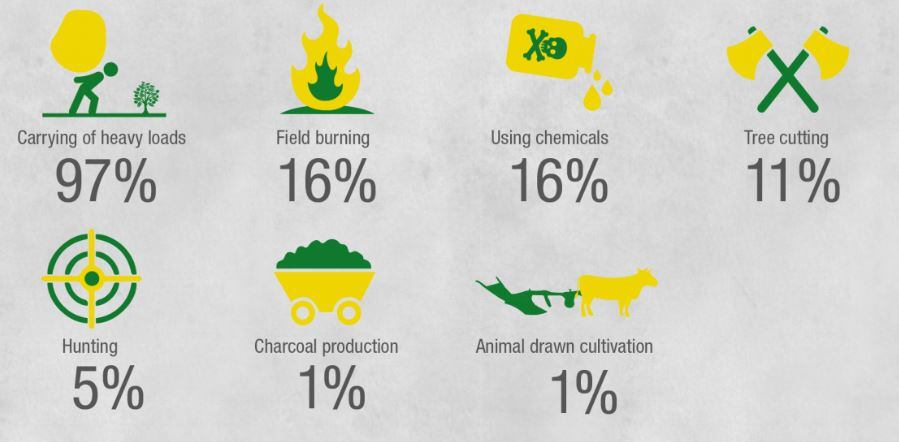Former ConfectioneryNews editor Oliver Nieburg will moderate the session hosted by the International Cocoa Initiative (ICI) on Tuesday, April 24. Location and time details below.

Mondelēz, Cargill, Nestlé and Tony’s Chocolonely have each adopted a version of ICI’s CLMRS in their sustainability programs.
The prevention system relies on locally appointed community liaison officers, who detect incidences of child labor by conducting household interviews.
They report to NGO partner ICI, which deals with incidents on a case-by-case basis, for example by assisting with a birth certificate to enable a child to attend school.
Nestlé first piloted ICI’s CLMRS in 2012 and has since discovered almost 5,000 children engaged in hazardous work in its cocoa supply chain, who are now being supported.
The KitKat maker says the system helped it cut child labour by 51% in its supply chain over a three-year period.
Other companies such as Barry Callebaut and Olam have since adopted the CLMRS.
ICI hopes its CLMRS will safeguard 400,000 children in cocoa communities by 2020.

Cocoa Barometer on CLMRS
A consortium of NGOs has called the system a “useful tool”, but argues the forecasted coverage represents only 15% to 20% of all children working in cocoa.
The Voice Network, Solidaridad, Oxfam and others said in the latest Cocoa Barometer, published this week, meeting the Harkin-Engel Protocol objective of a 70% reduction of cocoa child labor by 2020 will be ”impossible to achieve unless the signatories – large chocolate and cocoa companies, as well as producing governments – step up their efforts significantly”.
The Barometer said initial results from the CLMRS were promising, but added it was “labor and capital intensive” making village-by-village monitoring almost impossible.
“As such, a natural next step should be for national governments – in collaboration with the companies – to take the interventions that had the most effect, and deploy them at national scale through coordinated campaigns,” it said.
The NGOs also urged companies to set deadlines to have a CLMRS in all cocoa within their supply chain.
Today the systems cover only a portion of each companies’ cocoa supply – for example roughly 30% for Nestlé.
At the panel debate, companies will discuss their experiences implementing the CLMRS and their plans to scale up.
Lunch will be provided for attendees.
